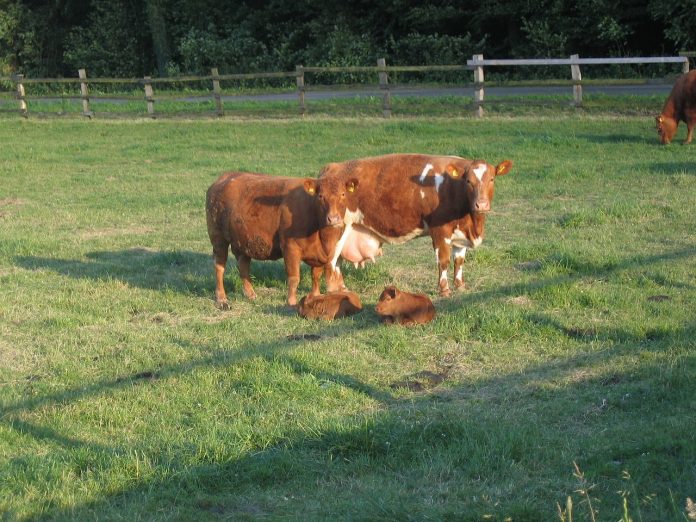We are in a great time of year for our pastures. They should be growing as fast as they will all year.
So, it’s time to relax — well not really.
Lush pastures
While some beef producers may be wrapping up their breeding season, those that choose to have their calves in a little warmer weather may just be starting.
A recent study out of the University of Illinois has received a lot of press in the beef community.
This study suggested that the low energy and high protein in lush spring pastures may have a negative impact on reproduction.
I am not going to talk about that now but wanted to use it as an example of how a lush pasture may not always meet all the nutritional needs of an animal.
Fetal programming
Does it ever seem like calves from one calf crop perform better or worse than calves from another, even when out of the same sire?
Does it ever seem like calves from one calf crop perform better or worse than calves from another, even when out of the same sire?
Do certain groups of heifer calves remain in the herd for a just a short time?
Do calves from your 2-year-olds not seem to perform to their genetic potential some years?
The nutrition your cows are receiving while they are early bred can have lasting effects on future productivity of their offspring. Much of the development potential for a calf is set early in pregnancy.
Two terms that are closely related but may be confusing are “fetal programming” and “epigenetics”.
Fetal programming relates to the long-term developmental effects due to environmental and nutritional conditions for the developing embryo or fetus.
Epigenetics relates to actual changes in the expression of genes, because of those environmental and nutritional conditions, that lead to those developmental effects.
Research
The study of fetal programming began in the 1990s when Dr. David Barker first published results from looking at the health status of children, born from women who were on a very reduced calorie diet, during the Dutch famine in 1944 to 1945.
As those children became older adults, they were observed to have many increased health issues.
Since then, results of studies looking at nutritional status of pregnant females have been published for sheep, horses, and cattle.
These studies have found long-term changes in offspring based on the conditions from when the mother was pregnant.
Think about the nutritional status of your animals. Are they losing weight because they are nursing and just cannot eat enough dry matter to meet their needs?
What will you do if the weather turns dry? How bad does it need to get before you supplement them?
A study at New Mexico State University looked at one supplementation of amino acids to cows either early or late in pregnancy or no amino acid addition.
They found that calves from cows receiving amino acids outperformed calves from cows not receiving amino acids.
No surprise there, but the surprise was that calves from cows receiving amino acids early in pregnancy outperformed those receiving amino acids late.
During weaning, calves from the early supplemented group gained more weight and did it more efficiently.
I am not advocating the addition of amino acids but stressing how nutritional changes early in pregnancy can have long-lasting effects.
The reproductive potential of offspring has been shown to be altered by changing the nutritional status of the mother.
Studies have looked at energy and protein levels in early pregnancy and have reported relationships to ovarian reserves, which would likely affect reproductive performance and herd longevity.
These observations were seen in both cattle and sheep.
While much of the research has concentrated on effects of undernourishment, there has been some research with over nourished sheep and cattle, which also has detrimental long-term effects on their offspring.
Next step
The fetal programming area of study is relatively new and it is hard to tell what recommendations will come in the future.
Early research has shown that several areas of future development and productivity are likely affected by nutritional changes that occur well before birth.
Studies in rats have shown epigenetic changes can affect three generations since ovarian reserves are present in unborn fetuses.
Nutritional changes that result in changes in body condition scores may be easy to observe but it is difficult to grasp the multi-generational effects of these nutritional changes.
Decisions we make in pasture management may have much longer consequences than we originally thought.
Details matter
We may need to rethink our decisions on trying to get another couple days of grazing on an overgrazed section, what we do in drought conditions, or how we manage our 2-year-olds separately to meet their needs.
The long-term consequences could be much worse than the damage done to the pasture.
Results of future research may help us know when and how much supplementation is necessary to maximize the potential of our animals.
Until we know more, it will be important to make sure our pastures are in good condition, we are moving the animals through them at proper intervals and our stocking rates match our available forage.
Without attention to detail, our livestock may never reach the genetic potential we have worked so hard to achieve.













